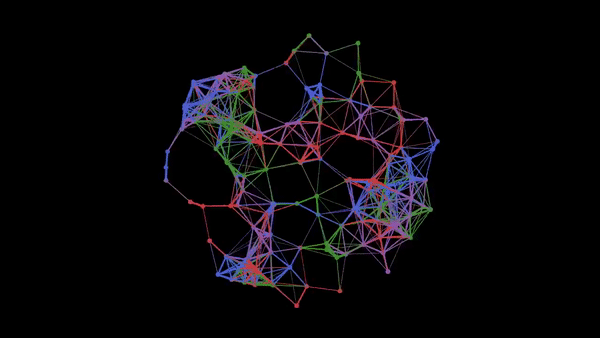3 - [Marketing] Exploring Virality

People today share content extensively, and while it may seem random which items spread rapidly, several factors can be structured through mathematical models that govern which content goes viral. Some of the factors underlying these mathematical models include the emotion the content evokes, its usefulness, and its accessibility, among others (Berger 192). Essentially, virality can be described as the likelihood of something being shared rapidly.
One essential component of the virality formula—the model that describes virality—is the viral coefficient. Sophia Bernazzani, a senior marketing manager at HubSpot, explains a model for virality:
In simple terms, the model states that the total number of new conversions (purchases, views, etc.) is given by multiplying the number of customers at the beginning with the viral coefficient:
The viral coefficient is the likelihood of an existing viewer or product user inducing an action carried out by another person. These actions vary depending on the scenario but could include viewing a video, downloading content from a site, making a purchase at a store, etc. Essentially, the viral coefficient quantifies the effectiveness of word-of-mouth marketing (Cross 1). In addition to building communities, as briefly mentioned in the introduction, this research paper will primarily explore ways to increase the viral coefficient by considering how evoked emotions play a role, how cycles could be shortened (the cycle time being the amount of time it takes someone to share something), and other related factors.
Research by experts on virality suggests that the general public is largely uninformed about the models and science behind virality. Shontavia Johnson, an innovation professor at Clemson University, states that a common misconception regarding virality is that it's "just the luck of the draw and the pity of internet strangers" (Wayne 1). Furthermore, the public's lack of understanding is evident in the number of articles asking questions such as "Can Biometrics Predict a Viral Marketing Campaign?" (Libert 1).
This research paper will utilize a myriad of outside sources to achieve its research goals. Sources spanning different occurrences of virality, such as media (meme, video, stories) virality, product virality, and evolutionary biology virality (viruses), will be employed to build a comprehensive understanding of why things go viral. One research paper that will be used is Jonah Berger and Katherine L. Milkman's What Makes Online Content Viral?. Berger and Milkman's paper will be used to explore ways to increase the viral coefficient. Another outside source is another Jonah Berger article: Why Some Things Go Viral And Others Don't. Berger's article will be used to explore common misconceptions regarding virality and their roots. Finally, Tony D. Sampson's Virality: Contagion Theory in the Age of Networks will be utilized to explore the theoretical bases of virality.

Boston - March 1, 2020